Gov. J.B. Pritzker says Illinois’ budget is balanced ”for the first time in decades.” That’s the claim he made upon signing Illinois’ $40 billion budget for 2020. Pritzker’s claim is simply not true. According to the state’s own actuarial calculations, his budget is billions in the red.
A big reason for the unbalanced budget comes from how politicians account for the state’s retirement debts versus how financial professionals do. There’s often a gap of several billion dollars between the two. Hiding that gap has allowed Illinois pols to perpetuate the myth of balanced budgets for decades.
Take Pritzker’s 2020 budget. The state’s pension funding laws, set up nearly 25 years ago by the General Assembly and
then-Gov. Jim Edgar, require the state to pay $9 billion* to Illinois’ five state-run pensions in 2020. “We are paying the full payment that is required under the ramp that was put in place in 1995, the statutory required payment,” Pritzker said when he signed the budget.
But what Pritzker ignores is the amount the state’s own actuaries say is required to properly fund Illinois’ pensions in 2020, an amount that exceeds $13 billion. That’s a total shortfall of $4 billion.
And it’s not just pension payments that are being shorted. It’s also payments for state-worker
retiree health insurance that are grossly underpaid.
State actuaries calculate the required payments for those benefits at about $4 billion annually, yet the state has only paid around $1 billion yearly in recent years. That’s billions more in shortfalls that Pritzker’s budget ignores.
Defenders of the “balanced-budget” claim will want to paint the above as a matter of semantics. But the billions in shortfalls are not only a matter of accounting. When the state continues to grow its
pension promises faster than it can pay for them – and then doesn’t pay enough into its state-worker retirement plans – it doesn’t balance the budget. The state’s debts jump as a result.
Illinois’ skyrocketing pension and retiree health insurance debts are the evidence of that.
Illinois not even “treading water”
Despite the fact that Pritzker’s payment to pensions consumes nearly a quarter of the current budget –
no other state is in such dire straits – it still won’t stop the state’s pension debts from growing. That’s how sick Illinois’ finances are.
Illinois’ Commission on Government Forecasting and Accountability shows that despite a $9.2 billion* contribution into pensions in 2020, the state’s unfunded liabilities will still increase by $2.4 billion to
$139 billion. Illinois is not unlike the financial deadbeat that never pays the minimum payment on his credit card. As a result, its debts just grow.
To just “tread water” – to keep Illinois’ debt flat from one year to the next – the state payment in 2020 should be $2.4 billion higher, or over $11 billion in total.
That tread water amount, however, does nothing to reduce Illinois’ pension debts. Even more, it’s based on the state’s actuarial assumptions actually panning out. If they don’t, then the state’s pension debts will be even bigger.
Statutory payment
If Pritzker and team want to make claims of “balanced” budgets, they’ll have to make lots of changes going forward.
For starters, they’ll need to dump the Edgar ramp, which pushes the repayment of pension debts far into the future, requires just 90 percent funding levels by 2045, and assumes overly optimistic investment rates.
In its place, they’ll have to accept the stricter standards adopted by the state actuaries (see Exhibit 2 for an example of TRS’ standard). Their required payments are larger to ensure the pension shortfalls get paid down sooner. They pursue 100 percent funding targets and accelerate the repayment of debts (TRS’ actuaries target 2035, SERS targets 2040 and SURS targets 2045). And how they account for individual pensions is more conservative (entry age normal vs. projected unit cost). All that results in required payments that are $4 billion larger than the state’s statutory requirements.
But politicians should go even further. While the actuaries still depend on ramps, other financial groups demand the use of less rosy investment rate assumptions and flat debt repayment schedules (level dollar) to determine yearly state contributions.
Wirepoints has covered
JP Morgan’s estimates of Illinois’ required payments and
ran our own as well, shown below. Those more responsible assumptions would require the state to put even more money into the pension plans.
Irresponsible
Politicians on both sides of the aisle can pat themselves on the back all they want for passing a budget. But the truth is they’ve just made Illinois’ debt crisis even worse.
They’re not paying what they should, nor have they passed a single structural reform that would help lower the annual cost of retirements. (In fact, they’ve done the opposite by
reboosting pension spiking for teachers.)
Illinois fiscal reality won’t change until the state is more honest about its debts and it reduces those debts through structural reforms.
*The state’s contribution includes $8 billion in money from the state’s general fund budget and an additional $1 billion from other special funds.
Read more about how politicians mislead Illinoisans about the impact of retirements on the budget:
Exhibit 1.
Exhibit 2.

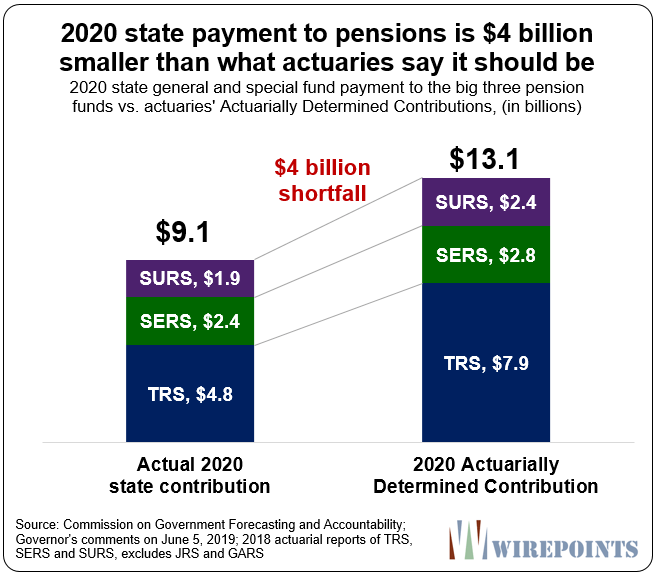
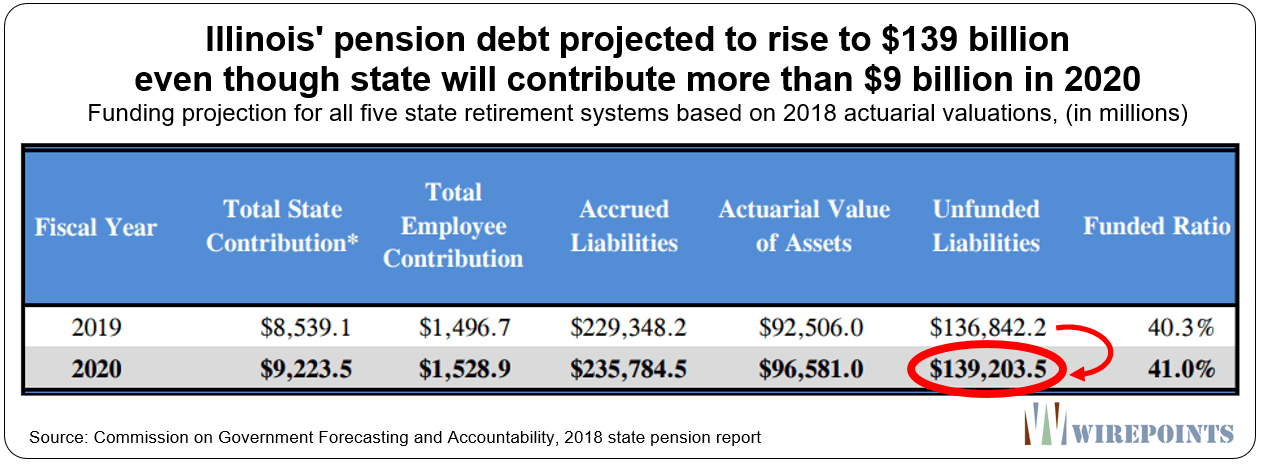
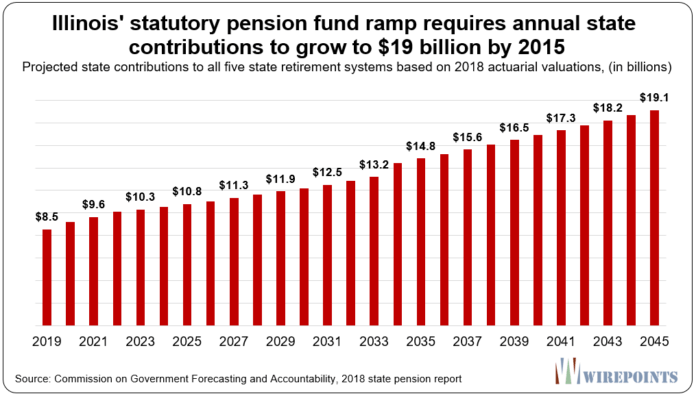
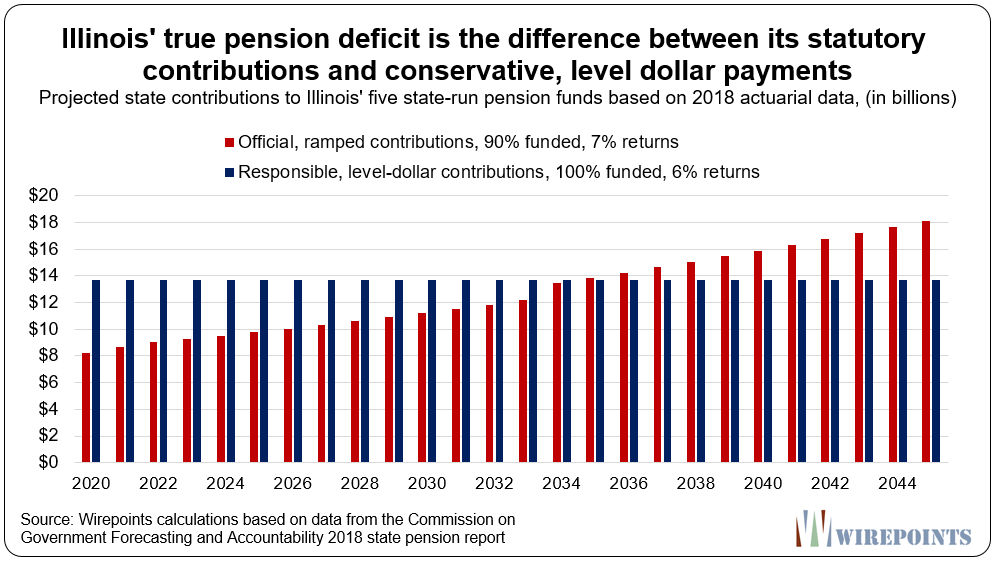
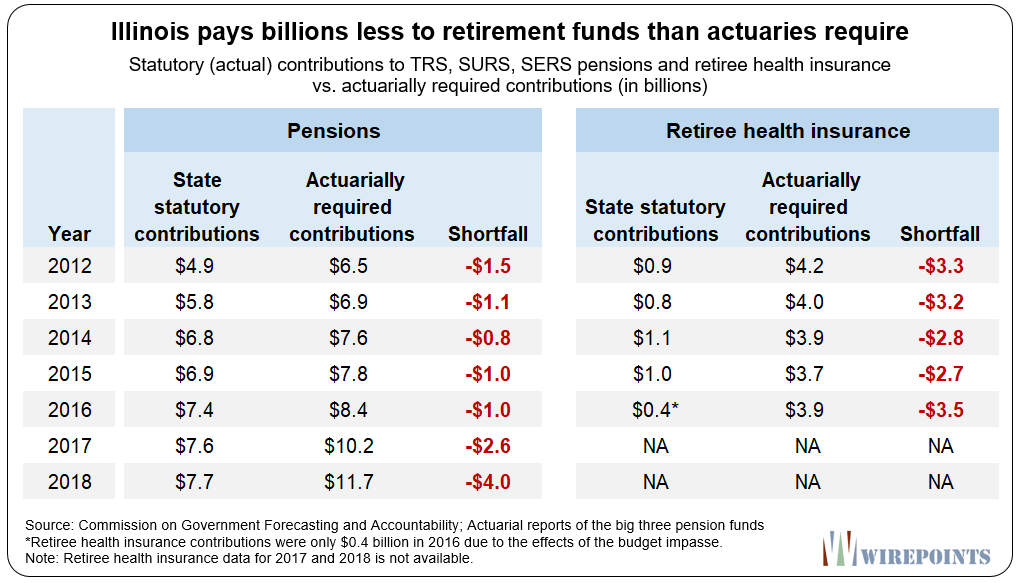
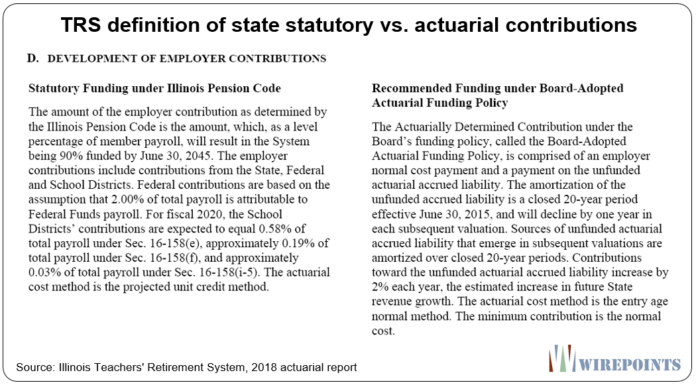
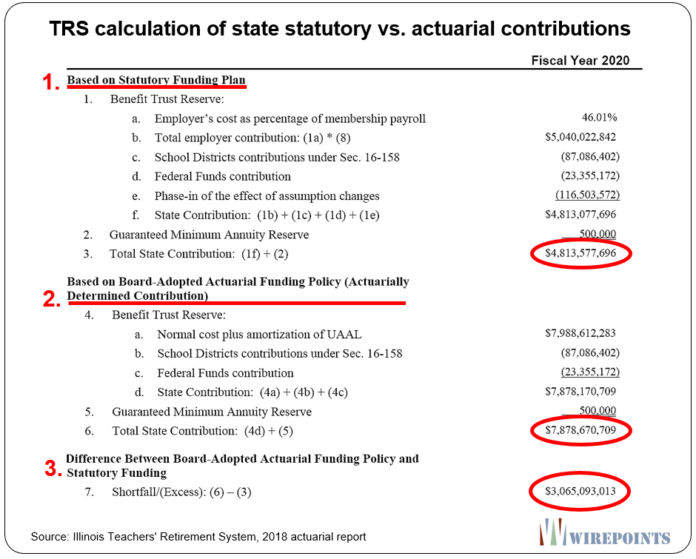



No comments:
Post a Comment